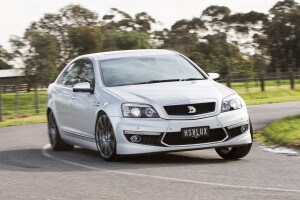Latest Review

2016 HSV Clubsport, Senator, GTS, Grange and Maloo Review
HSV builds brash Australian muscle cars that deliver spectacular bang-for-buck. The Gen-F2 Clubsport, Senator, GTS, Grange and Maloo offer high performance in practical packages.
What stands out?
HSV builds brash Australian muscle cars that deliver spectacular bang-for-buck, with terrific levels of convenience and safety equipment. The Gen-F2 Clubsport, Senator, GTS and Grange sedans, the Clubsport Tourer wagon and the Maloo ute offer a high-performance driving experience in a roomy, practical package that begins with a big V8 engine and rear-wheel drive.
What might bug me?
The prospect of coming to grips with the tyre repair and inflator kit. You don’t get a spare wheel and tyre in any HSV Gen-F2, although you can add a space-saver as an extra-cost option.
If you choose a sedan, having to leave long items behind if they are much broader than a pair of skis. You can’t fit them in the boot, because the rear seatback does not fold down (you get only a ski-port).
Keeping your HSV Gen-F2 in fuel and tyres. Every variant is a big, heavy, and very quick car that uses a lot of petrol and is equipped with expensive, and relatively fast-wearing, high-performance tyres.
What body styles are there?
Four-door sedan (Clubsport, Senator and GTS); long-wheelbase four-door sedan (Grange); five-door wagon (Clubsport Tourer); and two-door utility (Maloo).
Gen-F2 HSVs drive their rear wheels, and are classed as large high-performance cars, lower priced.
What features do all versions have?
A smart key, which lets you unlock and start the car while the key resides in your pocket or bag.
Dual-zone climate-control, which lets you set different temperatures for each side of the cabin.
Cruise control. Windscreen wipers that turn on automatically when it rains, and headlights that turn on automatically when it’s getting dark.
A reversing camera, and parking sensors front and rear. A parking assist system, which can steer the car into a parking spot.
Leather upholstery (seats, steering wheel and gear lever handle), and a power adjustable driver’s seat.
A multimedia system with satellite navigation, a CD player, iPod integration, Bluetooth connectivity for phone calls and audio streaming, and an eight-inch colour touchscreen. Controls on the steering wheel for the multimedia system.
A head-up display, which projects a speedo and other helpful information onto the windscreen near the driver’s line of sight, so that you can read it without taking your eyes from the road.
A Driver Preference Dial, which allows you to adjust simultaneously features such as the electronic traction control, the weight of the steering, the sound from the engine, and (on some models) how comfortably the car rides, for a more relaxed or more engaged driving experience.
Wide, 20-inch aluminium alloy wheels, shod with grippy, low-profile, 255/35 tyres at the front and even broader 275/35s at the rear. A tyre puncture repair and inflator kit. A tyre pressure monitor, which warns you if a tyre has lost air.
A limited-slip differential, which helps the tyres convert all that V8 grunt into thrust (by limiting wheelspin).
Metallic paint: unlike many brands, HSV does not charge you extra for any of its available colours.
Electronic stability control, which can help you control a skidding car. All new cars must have this feature.
Six airbags, and an active safety suite that comprises forward collision alert, lane departure warning, blind spot detection, and rear cross traffic alert. (For airbag placement, and for more on HSV Gen-F2 safety systems, please open the Safety section below).
Every HSV Gen-F2 carries a three-year, 100,000 kilometre warranty.
Which engine uses least fuel, and why wouldn't I choose it?
Three engines are available in an HSV Gen-F2, and every one of them is a very powerful and thirsty 6.2-litre V8. So you’re going to use a lot of petrol no matter which one you choose.
The engine that uses least fuel is the only one not assisted by a supercharger. That engine, designated the LS3, is available only in the HSV Grange, and it consumes 12.9 litres/100km on the official test (city and country combined).
The main reason you would choose a different engine is that you don’t want a Grange. The Grange is a bigger and more lavishly equipped car than the other HSVs, and while it still has a high-performance focus, it may be that you want a sharper sports focus and even more power.
Both of the other engines are updated – and supercharged – versions of the LS3, designated LSA, and both offer significantly more grunt from idle up. The less powerful of these – which still makes 400kW – is the most widely available engine in an HSV Gen-F2, and it comes with all but one of the remaining models: the Clubsport R8 LSA (sedan and wagon), the Senator Signature LSA, and the Maloo Ute. It uses about 15 litres/100km on the official test.
The more powerful of the supercharged engines is available only in the HSV GTS – the hardest-hitter of all the F2 HSVs. It provides about 10 per cent more go, and without using any more fuel.
Any Gen-F2 HSV is available with a conventional six-speed automatic gearbox, and the Tourer and Grange come only with this gearbox. The Clubsport sedan, Maloo, Senator and GTS are also available with a six-speed manual gearbox.
What key features do I get if I spend more?
A Maloo R8, Clubsport R8 or Clubsport Tourer R8 offers the features common to every Gen-F2.
Stepping past these and paying more for a Senator Signature brings a more subdued interior, and an exterior treatment that strikes a middle ground between the overtly sporty Clubsport (and GTS) and the statesmanlike Grange.
The Senator also brings extra comfort, thanks to heated front seats and a more sophisticated suspension that HSV calls Magnetic Ride Control. This suspension uses computer-controlled dampers that adjust automatically how firmly the car rides, softening in milliseconds to absorb sharp bumps and firming up again afterwards. You can also choose Touring (comfort) or Sport ride-settings manually from the driver’s seat. In addition, the Senator’s alloy wheels are forged (an alternative manufacturing process), and therefore are stronger and even lighter than the more common cast alloy wheels on less costly Gen-F2s.
Paying more again for a GTS takes the styling in the other direction, with a wilder look than even the Clubsport, and brings you the more powerful of the supercharged engines. It also brings you an Electronic Driver Interface, which displays data helpful in track use such as your lap time. And it has a handling aid called torque vectoring, which adjusts helpfully which rear wheel receives most power in corners. Like the Senator, the GTS has front-seat heaters, Magnetic Ride Control and forged wheels. (The Electronic Driver Interface is optional on other GenF2 cars. For more on this and on torque vectoring, please open the ‘Will I enjoy this car?’ section below).
In contrast, choosing instead the Grange brings you more room inside (it has a longer wheelbase), less power (the engine is the non-supercharged LS3), and more luxury. There are extremely bright xenon headlights, front foglights, and the most subtle exterior treatment on an HSV F2, which goes with a more restrained interior look. The driver’s seat can remember adjustments for up to three people (so that you can restore yours easily after companions have driven the car). The Grange too has forged wheels, Magnetic Ride Control, and front-seat heaters.
Does any upgrade have a down side?
There is no significant downside from upgrading, but manual and auto variants each have an additional unique feature.
Manuals come with Launch control, which helps you maximise acceleration from a standing start. Autos do not.
Autos have a remote-start feature, which lets you start the engine from outside the car. This could be handy if you want to let the engine warm up before you drive off, or let the climate control cool or heat the cabin before you get in. You don’t get this with a manual.
How comfortable is it?
The HSV Gen-F2’s locally developed suspension shines through in the way the cars ride. They soak up bumpy Aussie roads in a more relaxed fashion than many European executive-express sedans and wagons, which have been tuned for the typically smoother surfaces of high-speed autobahns.
Gen-F2s offer enough compliance to soak up rough surfaces, along with the control to prevent the body – and occupants – from being pogoed when riding big bumps. These are big, comfy cruisers.
The Magnetic Ride suspension in the Senator, GTS and Grange brings a comfort setting that relaxes the dampers, optimising them for a slightly more sedate country-road gait. However, it’s not the case that these are a must-have for a smooth ride, like similar systems are in some European cars.
The broad, high-performance tyres worn by HSV Gen-F2 cars are more prone to drone than the average skinny passenger tyre on coarse chip surfaces. However through skilful sound deadening, occupants are well isolated from most tyre noise, as well as from wind rustle and suspension noise.
What about safety?
In addition to six airbags, a reversing camera, front and rear parking sensors, auto windscreen wipers and tyre-pressure monitors, you get as standard in every HSV Gen-F2 a suite of active safety systems.
There are two airbags directly in front of the driver and passenger; one on the outer side of each front occupant to protect the upper body; and a curtain airbag along each side to protect heads front and rear from side-impacts.
A camera-based forward collision alert scans the roadway ahead for obstacles – typically another car that has slowed suddenly – and gives you audible and visible warnings if it concludes a collision is imminent. It also prepares the brakes for an emergency stop. (It will not apply the brakes automatically, however.)
Blind-spot detection warns when a vehicle is travelling next to you but out of view to the rear. Lane departure warning lets you know that you are drifting distractedly out of your lane (a sign of fatigue).
When you are reversing, a rear cross-traffic alert warns if something is about to cross behind you. This could save you from car-park bingles.
Autonomous emergency braking is not offered, either standard or as an option, in any HSV Gen-F2. AEB systems warn you of obstacles in front of the car – typically another vehicle that has slowed suddenly – and apply the brakes automatically if you do not react.
The Australasian New Car Assessment Program (ANCAP) has not rated the HSV Gen-F2. However, the Holden Commodore, which is fundamentally very similar, achieved a five-star rating, ANCAP’s maximum.
I like driving - will I enjoy this car?
‘I Just Want One!’ went the long-lived HSV slogan, and for a certain breed of patriotic high-performance car fan, that sums up the powerful appeal of the Gen-F2, from the Maloo to the Grange.
These cars are not about subtlety. They’re about having a good time and shouting about it, from their borderline-lairy exterior styling, via often chintzy interior detailing, to the booming, baritone V8 engine note.
But despite the focus on acceleration and handling, and their seriously brash personalities, each Gen-F2 offers value, space, practicality and comfort by the bucket load, which makes them terrific all-rounders.
So, if you get HSV – if you Want One, or even if you just appreciate a uniquely flavoured, talented, home-grown high-performance car – you’re not going to find yourself disappointed.
Everything about driving the Gen-F2 is chunky. The comfy front seats are built for big bodies, so if you’re of small build you might find them a bit too broad between the deep side bolsters. The steering wheel is fat and sculpted, the clutch in manuals is on the heavy side, and the manual gearshift has a notchy action.
While this means it takes familiarity and dexterity to find an easy, smooth flow in the Gen-F2s, it also adds an enjoyable feeling, at the end of a hard drive, that you’ve conquered the beast.
An auto gearbox, of course, removes two elements from the mastery required to drive Gen-F2s hard. It works smartly and decisively, and it still lets you have your fun by way of manual gear-shift paddles on the steering column.
While some of the controls require a bit of muscle, the accelerator is best operated with a light right foot. It is not that, with its broad rear tyres and traction control, there’s any risk your rear-drive HSV will send you off the road backwards. Not in the dry with ESC switched on, anyway. It’s just that you have to be careful not to lose your licence, because it’s all too easy to speed with a big, supercharged engine doing its effortless thing.
The less potent engine in the Grange is still a ripper, with a beautiful, crisp, deep V8 note and straight line shove to impress anyone … who hasn’t driven a supercharged version. Make no mistake, despite the relatively demure exterior, the Grange remains a high-performance hoot to drive.
Heading straight to the other end of the spectrum, the GTS, with the most potent iteration of the LSA V8 engine, is an immensely quick and characterful machine, with additional power from the bottom up and a subtle supercharger whine.
Extra features add to the repertoire of this ultimate Gen-F2, among them the Electronic Driver Interface (EDI), which delivers performance data-logging and lap timing to the infotainment screen. The GTS-only torque-vectoring system cleverly splits power between the rear wheels, through the subtle use of either rear brake, to maximise drive while helping twist the car through the turn (diminishing the natural tendency to push the nose wide when you press the accelerator mid-corner).
The GTS also adds a competition mode to the standard Driver Preference Dial. This takes steering beefiness, exhaust and intake blare, and engine responsiveness, to even greater heights than in the other cars, as well as loosening the electronic stability control’s safety net to allow skilled drivers extra fun on the racetrack.
For a lot less money however, the Clubsport delivers a lot of the GTS’s speed and involvement. That it’s a little bit less powerful, does not have torque vectoring, and gives up some ride and handling polish through the absence of computer-controlled suspension, removes little of the fun it can provide as a road-going blaster.
The one thing that doesn’t change across the diverse Gen-F2 range is the brilliantly honed handling balance, which brings front-end grip to dispatch the tightest set of twisty corners and the rear-end poise and tenacity to blast out the other side – with a disdain for all but the lumpiest of roads. This is even true of the Maloo ute, which has the same multi-link rear suspension as the sedans and wagons (but with a bit less weight over it, so if you’re looking for an ESC-off tail-slide machine, this is it).
How is life in the rear seats?
There’s not much that can match a Clubsport, Senator or GTS for back-seat space and comfort … other than a Grange, whose longer wheelbase gives you even more room to stretch your legs.
The HSV Gen-F2, like the Holden Commodore and Caprice they’re derived from, have more space in the back than anything short of a large European executive express such as a BMW 5 Series or Mercedes E-Class.
The Gen-F2 also has a more inviting, cushier, seat base and more supportive backrest than its Euro counterparts, with generous head and foot room.
You could ride happily in the back of an HSV Gen-F2 for hours on a country drive – just as long as the driver wasn’t having too much fun.
How is it for carrying stuff?
The HSV Clubsport, Senator and GTS have huge boots that can hold 496 litres, and the long-wheelbase Grange sedan’s is even bigger at 535 litres. The Tourer wagon can carry 895 litres, and the Maloo R8 ute has a payload of 500kg in its generous tray.
The sedans don’t have folding seatbacks, supplying only a ski-port that lets you carry relatively skinny items that are too long to fit in the boot. The cavernous Tourer can haul 2000 litres of luggage with its 60-40 rear seatbacks folded.
Where is it made?
All HSV Gen-F2s are built in Australia but their engines are imported from General Motors plants overseas. The LS3 engines are made in North America and the supercharged LSAs in Mexico.
What might I miss that similar cars have?
There is little on sale that’s similar to the HSV Gen-F2, as a big, relatively low-cost, rear-wheel-drive V8 high-performance car.
Compared with the Holden Commodore and Caprice (on which they’re based), the HSV Gen-F2 is louder, brasher, better equipped and higher-performing. The flip side is that the high-performance Commodores are more subtle, less thirsty, less expensive, smoother to ride in, and perhaps easier to live with.
Ford doesn’t do a direct alternative, now that Ford Performance Vehicles has closed its doors, but you could also consider the Falcon XR6 Turbo and XR8, which are pitched at the same level as the Commodore SS. The two-door, rear-drive, V8 Ford Mustang is another to keep in mind.
You could also consider the American Chrysler 300 SRT, which is a similar-sized, rear-wheel-drive muscle sedan with a 6.4-litre V8 and an eight-speed automatic (only). It’s less costly than any HSV Gen-F2 and has autonomous emergency braking, but it isn’t as athletic as a Clubsport or GTS.
A BMW M5 or Mercedes-Benz CLS63 AMG S are the nearest European alternatives, being big four-doors with high-powered V8 engines and rear-wheel-drive. But they cost twice as much as a Gen-F2.
I like this car, but I can't choose which version. Can you help?
Our reviewers like the Clubsport R8 LSA manual. Now that the Clubsport has the supercharged V8 previously reserved for the GTS (in slightly detuned form in the Clubbie), it’s evolved into a weapon-quick, well-equipped Aussie sports sedan (or wagon) bargain.
Are there plans to update this model soon?
The HSV Gen-F range, which arrived in 2013, was subtly restyled and updated at the end of 2015 into the Gen-F2.
The end of production announced for the Australian designed and built Holden Commodore and Caprice on which the HSV Gen-F2 is based means that, but for some tweaks for the 2017 model year, the current car will be the last of the rear-wheel-drive, all-Aussie V8 high-performance cars.
However, there will be limited-edition variants. Clubsports and Maloos fitted with the formerly standard, unsupercharged LS3 engine have been announced, and a 450kW-plus GTS-R send-off model is widely expected.
A replacement based on Holden’s imported next-gen Commodore is likely in 2018.
Score breakdown
Things we like
- Huge performance
- Involving dynamics
- Practicality
Not so much
- Big appetite for fuel and rear tyres
News
-
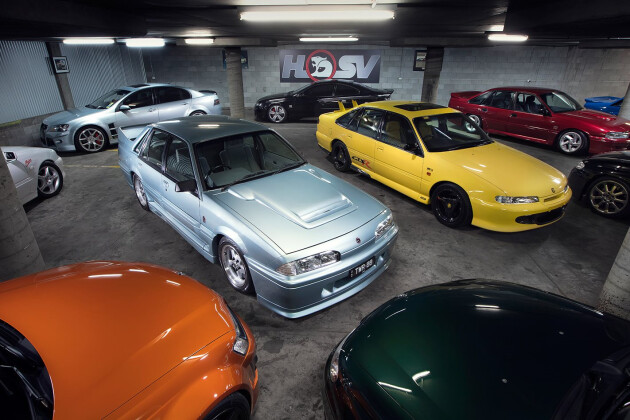 Features
FeaturesAustralia’s best HSV collection
Inside the secret man cave that houses HSV’s best
-
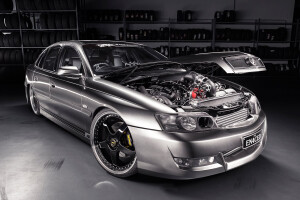 Features
FeaturesEIGHT-SECOND TWIN-TURBO 2003 HSV WK GRANGE
There were lots of blow-ups before the blown LSX went in to Josh Galgaro's HSV Grange
-
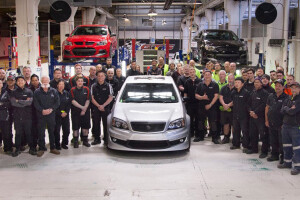 News
NewsFinal HSV Grange rolls off production line
The beginning of the end for tuned Holdens starts with the last Grange rolling off HSV’s Clayton production line
-
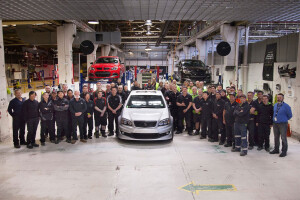 News
NewsHSV builds final Grange
Final hot limo leaves the production line
-

MONSTER TWIN-TURBO HSV GRANGE RUNS EIGHTS – VIDEO
-
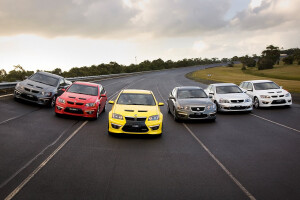
Holden Special Vehicles' Top 10 Greatest Hits
-

Holden Special Vehicle’s Top 10 Greatest Hits
-
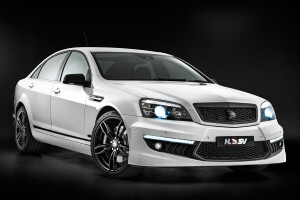
HSV Grange SV revealed


